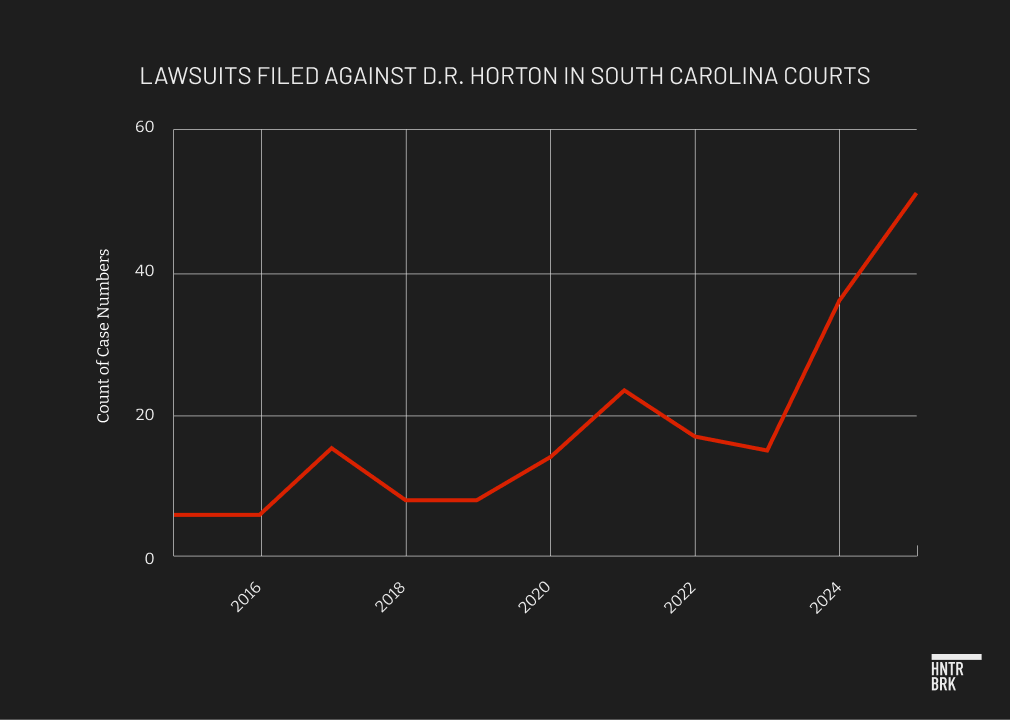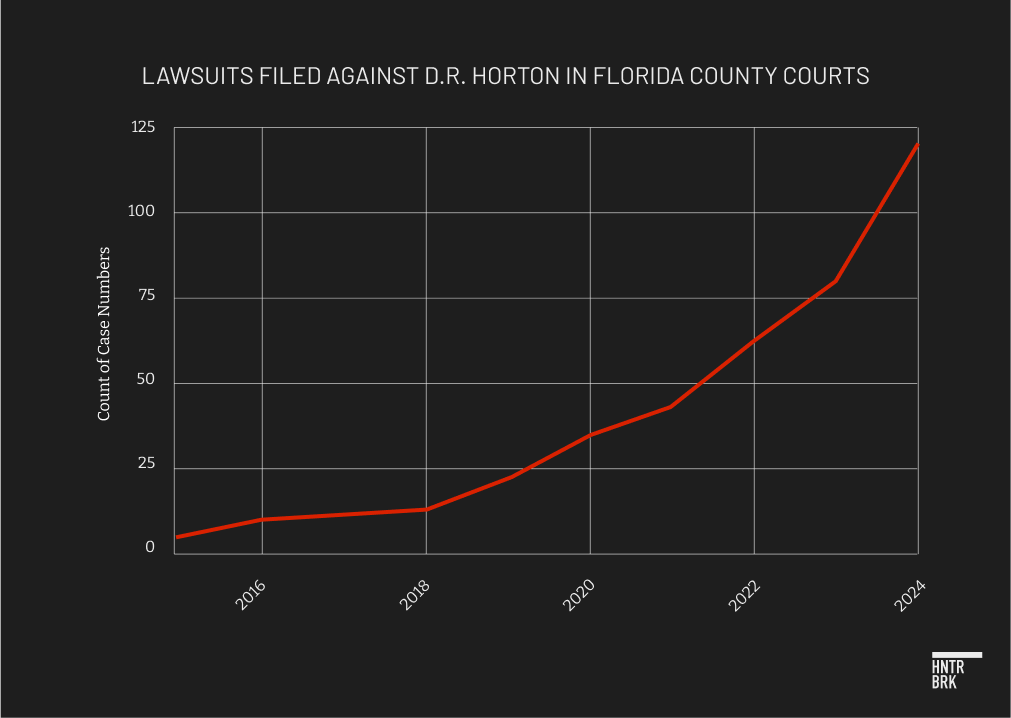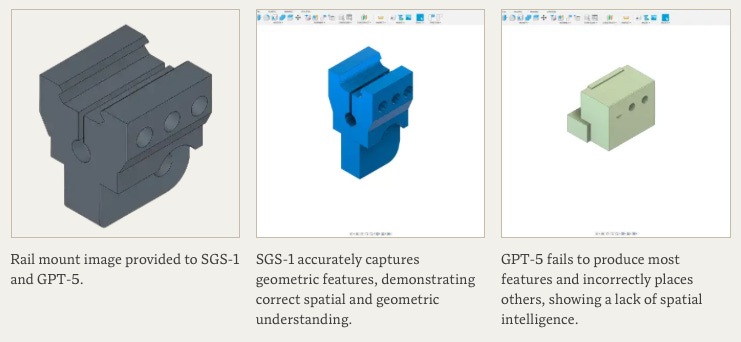Reading List 09/20/25
Shoddy US homebuilding, a foundation model for creating CAD files, ghost kitchens, lunar Helium-3, and more.

Welcome to the reading list, a weekly roundup of news and links related to buildings, infrastructure, and industrial technology. This week we look at shoddy US homebuilding, a foundation model for creating CAD files, ghost kitchens, lunar Helium-3, and more. Roughly 2/3rds of the reading list is paywalled, so for full access become a paid subscriber.
A few items of note this week:
IFP is hosting a launch party for “The Origins of Efficiency” in Washington DC on Friday, September 26th, at Signal House. If you want to chat with me, or buy a hardcover of the book before its official release date, come by! Details are here.
I was on Econtalk talking about building airplanes during WWII.
Hunterbrook on homebuilding
Hunterbrook is a media outlet owned by a hedge fund, with the idea that they will break newsworthy stories about businesses in order to (sometimes) trade on the resulting stock price moves. They recently wrote long, thorough report about the frequent low quality of homes produced by major US homebuilders:
Both D.R. Horton and Lennar promise that their mission to build affordable homes will not come at the cost of quality — even as they have told investors they would cut costs to offset diminishing margins amid a tightening housing market.
“You have to start value-engineering every component of the home, which means making compromises, not in quality, but in the way that you actually configure the homes,” Lennar CEO Stuart Miller said in an interview with Bloomberg Television last year.
D.R. Horton similarly promised its investors it would find ways to cut costs, like “replacing certain high quality fixtures and finishes with less expensive yet still high-quality fixtures and finishes.”
But many avoidable defects are caused by business practices that focus on building and selling quickly, with minimal concern for repeat business or quality control, according to Robert Knowles, president and founder of the National Association of Homeowners and a licensed professional engineer who said he has inspected thousands of new builds.
“There is no bonus for building the house to code, for quality,” Knowles said, to his knowledge. “There’s only bonuses for speed … and volume.” Knowles estimated 100% of all new builds probably have multiple code violations.
As someone who recently had to replace their HVAC system in a four-year old house, this unfortunately doesn’t come as a major surprise to me. Based on the frequency of lawsuits filed, it seems like this turn toward shoddiness might be a relatively recent phenomena:
First gigawatt data center
In my essay from last year about how to build an AI data center, I noted that the power demanded by data centers kept increasing: 10 megawatt data centers of the 2010s giving way to 100 megawatt data centers in the 2020s, with even bigger ones on the way.
10 years ago, nearly all data centers used fewer than 10 megawatts, but a large data center today will use 100 megawatts or more. And companies are building large campuses with multiple individual data centers, pushing total power demand into the gigawatt range.
Now Elon Musk's xAI is building what will apparently be the world’s first 1 gigawatt data center. From SemiAnalysis:
The Colossus 2 project was kicked off on March 7th, 2025, when xAI acquired a 1m sqft warehouse in Memphis, and two adjacent sites totaling 100 acres. By August 22nd, 2025, we count 119 air-cooled chillers on site, i.e. roughly 200MW of cooling capacity. That’s enough to power roughly 110k GB200 NVL72. And an Elon tweet shows some racks were already installed in July.
xAI built in six months what took 15 months for Oracle, Crusoe and OpenAI!
…Memphis and Tennessee have been getting a lot of pushback, so xAI’s genius move was to develop a Gigawatt-scale energy hub right across the border in Southaven, Mississippi. In mid-2025, the company acquired a former Duke Energy power plant in Southaven. Shortly after, Mississippi regulators granted xAI temporary approval to run gas turbines there for up to 12 months without a permit!
…To deploy faster than peers, xAI relies on rental turbine companies. NYSE-listed Solaris Energy Infrastructure owns a fleet of 600MW of gas turbines, of which ~400MW currently serve xAI. Musk’s firm weighs 67% of SEI’s 1700MW orderbook, i.e. 1,140MW. There are ~240MW on the Memphis Colossus 1 site, while the remaining 900MW will be owned by a Joint Venture owned at 50.1% by Solaris and 49.9% by xAI.
CAD foundation model
I’ve previously noted that LLMs tend to be good at “digital” tasks like manipulating text and images, and less good at tasks that require interacting with the physical world, and that I’m interested in seeing how LLMs make progress on the latter sort of tasks. In that vein, here’s a new foundation model (a “base” AI model that can be then trained for some specific AI task) from Spectral Labs for generating CAD files. From the company’s website:
Today we are announcing SGS-1, a foundation model that can generate fully manufacturable and parametric 3D geometry. You can try a research preview of SGS-1 here.
Given an image or a 3D mesh, SGS-1 can generate CAD B-Rep parts in STEP format. Unlike all other existing generative models, SGS-1 outputs are accurate and can be edited easily in traditional CAD software.
Overview of SGS-1 - users can provide an image or “dumb” 3D file, and get back a parametric B-Rep file that can be easily edited to match specific dimensions
SGS-1 shows strong general results, producing much more complex and diverse CAD shapes than existing methods.
Outputs from the SOTA large reasoning model (GPT-5) demonstrate a clear lack of spatial understanding, producing outputs that are unusable or too simple to actually be useful. We use both SGS-1 and GPT-5 to generate the parametric geometry for the rail mount from the input image, in order to produce the desired target complete assembly.
SGS-1 accurately represents the geometry and can be plugged into an assembly context, while the output from the large reasoning model is missing core spatial features.
Icy moons
Like anyone who has read 2010: Odyssey Two, I knew that some moons of Jupiter and Saturn have significant amounts of water and ice on them. What I didn’t realize was that apparently they have much, much more water than earth does. (Earth doesn’t have that much more water than Pluto does!) Via Business Insider:
Earth seems drenched with water from mountaintop to ocean bottom.
But our home planet is a desert compared to some places the solar system, both in terms of its total water volume and the amount of liquid on Earth relative to its size.
Consider Jupiter's ice-encrusted moon Europa, which is smaller than Earth's moon. Scientists recently used 20-year-old Voyager data to find even more evidence that Europa has twice as much water as our planet. Even tiny Pluto may have an ocean nearly as large as Earth's.
If earth had managed to collect around 3 times as much water as it did, it apparently wouldn’t have dry land at all. But apparently earth having as much water as it does is something of a surprise. Via The Conversation:
This isn’t actually a surprise. Earth formed in the warm part of the protoplanetary disk, at a location well within the “snow line”. In fact, the origin of Earth’s water has been a puzzle to astronomers for many years.
It seems most likely that Earth’s water was delivered from the colder reaches of the Solar system through impacts, most likely from the outer reaches of the asteroid belt. That delivery through bombardment would also have targeted Mars and Venus.
There is growing evidence that both Mars and Venus once had oceans much like Earth’s - until the vagaries of time took their toll.
In the 4.5 billion years since the Solar system’s formation, the Sun has grown markedly more luminous. As a result, Venus grew ever warmer until its oceans boiled, hundreds of millions of years ago.






